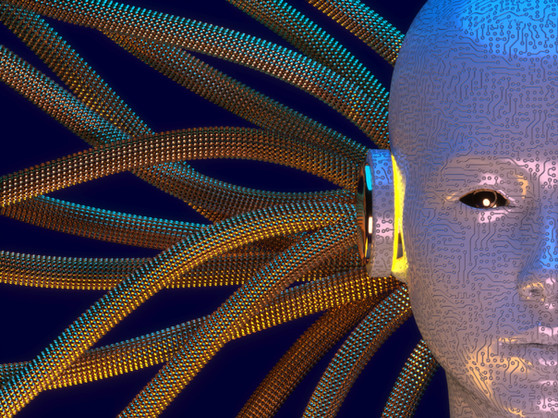Drone Racing: The Thrilling World of High-Speed Aerial Competitions
- lahari g
- Aug 14, 2023
- 3 min read
Drone racing has rapidly gained popularity as an exhilarating sport that combines high-speed flight, advanced technology, and competitive spirit. Pilots navigate their agile and powerful racing drones through custom-built tracks, maneuvering through challenging obstacles with precision and skill. In this blog post, we will explore the world of drone racing, including the technology driving it, the skills required to excel, and the electrifying atmosphere of professional racing leagues.
But if you want to learn more about the aerospace industry and are fascinated by rockets and space, I would suggest enrolling in an AEROGO workshop. This will help you first solidify your concepts and the fundamentals of aeromodelling because they offer good hands-on practical knowledge on model construction.
1. The Rise of Drone Racing
Drone racing has experienced an exponential rise in popularity, captivating audiences worldwide with its thrilling combination of advanced technology and adrenaline-pumping action. Initially starting as a niche hobby, the sport has evolved into a global phenomenon, attracting a diverse community of professional racers and dedicated enthusiasts. The origins of drone racing can be traced back to the increasing popularity of unmanned aerial vehicles (UAVs) and the development of high-performance racing drones. These advancements have paved the way for the exciting world of drone racing as we know it today.
2. The Technology Behind the Races
Drone racing demands cutting-edge technology to push the boundaries of speed and maneuverability. Racing drones are meticulously engineered for optimal performance, featuring components designed for agility, durability, and speed. Advanced flight controllers serve as the brains of the drones, ensuring stability and responsiveness during high-speed maneuvers. Powerful motors generate the thrust needed for rapid acceleration and quick direction changes.
To provide a truly immersive experience, FPV (First-Person View) systems are integrated into racing drones. These systems consist of a small camera mounted on the drone and a video transmitter that sends live footage to the pilot's goggles or display. Pilots view the race from the drone's perspective in real-time, allowing them to navigate the course with precision and make split-second decisions.
The lightweight frames of racing drones are often made of carbon fiber or other durable materials to withstand crashes and collisions. These frames are designed to be aerodynamic, reducing drag and maximizing speed. Overall, the technology behind drone racing enables pilots to push the limits of aerial agility and experience the thrill of high-speed racing like never before.
3. Mastering the Skills: The Art of Drone Racing
Mastering the art of drone racing requires a combination of exceptional piloting skills and the ability to make split-second decisions. Competitors must develop the expertise to navigate their drones through tight turns, swiftly maneuver around challenging obstacles, and maintain precise control while reaching optimal speeds. Key skills include throttle control, which allows pilots to modulate their drone's speed and acceleration, and understanding racing lines, which involves finding the most efficient path through the course.
Performing acrobatic maneuvers, such as flips and rolls, adds a dynamic element to races, requiring precise timing and control. Situational awareness is crucial to anticipate and respond to changes in the race environment and avoid collisions with other drones.
To master these skills, pilots dedicate countless hours to practice, refining their technique and improving their reflexes. Passion for flight and a deep understanding of the intricacies of their drones are also vital components of becoming a successful drone racer. The combination of honed skills, practice, and a love for the sport sets the foundation for achieving excellence in the art of drone racing.
4. The Thrill of the Race: Spectator Experience and Professional Leagues
Drone racing events provide an exhilarating experience for both pilots and spectators. The atmosphere is electric as racing drones zip through specially designed tracks, maneuvering through hairpin turns and daring obstacles. Spectators have the option to don FPV goggles, which allow them to experience the race from the pilot's perspective, or watch on large screens that display live footage.
Professional racing leagues like the Drone Racing League (DRL) and MultiGP organize thrilling events globally, featuring top-tier talent and substantial prize pools. These leagues showcase the very best drone racers, who push the boundaries of speed, agility, and precision. The races captivate audiences with their high-stakes competition, breathtaking maneuvers, and intense battles for the finish line.
Conclusion
Drone racing has taken the world by storm, captivating enthusiasts with its adrenaline-fueled action and cutting-edge technology. As the sport continues to evolve, more individuals are discovering the exhilarating experience of piloting high-speed drones through challenging courses. With its blend of skill, precision, and technology, drone racing offers a unique form of entertainment that appeals to both participants and spectators. Whether you're an aspiring racer or a fan seeking an unforgettable experience, the world of drone racing awaits. So strap in, put on those FPV goggles, and prepare to unleash the excitement of high-speed aerial competitions.
















Comentarios